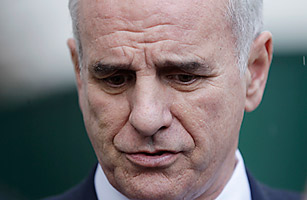
Less than two weeks before the far-reaching mechanisms of Minnesota’s government might come to a halt, Jessica Lund’s mind is filled with thoughts of snikerdoodles. Lund, 38, has Down syndrome and was helping to bake the cinnamon-sugar cookies with a care worker in a group home on a recent afternoon. Five other adults with developmental disabilities live with Lund in this 2,000 square-foot rambler that looks like any other on a suburban block of Golden Valley — one of many homes run by Hammer, a private non-profit that’s funded almost entirely by taxpayer money. Like the thousands of the state’s most vulnerable citizens, Lund doesn’t have a voice in the legislative brinkmanship that threatens to disrupt her life.
Minnesota’s political leaders failed to pass a budget by the end of the legislative session on May 23. Now, the clock is ticking down to a fiscal deadline of June 30, the end of the current budget biennium, when lawmakers are required to pass another two-year budget that will close a $5 billion deficit. One of the more dramatic aspects of Democratic-Farmer-Labor Party Gov. Mark Dayton’s shutdown plan, submitted to a district court last week, involves the services of health care providers like Hammer. While the plan still deemed such entities as hospitals, clinics and nursing homes critical, state payments to those providers would have ceased. But on Monday, Dayton issued a minor but important revision, expanding the list of critical services that would be funded during a shutdown. That’s good news for Tim Nelson, Hammer’s president, who noted that some of whom are tube-fed or require vigilant, around-the-clock care. “We obviously have an extremely vulnerable population that we can’t leave alone, can’t be left unsupervised,” he says. Late last week, Nelson was planning for the worst — talking to program directors about getting an extended line of credit should payments from the state cease.
Since 2002, there have been six state government shutdowns, the shortest lasting only hours, according to the National Conference of State Legislators. Two shutdowns, the longest since 2002, lasted just over a week: one in Pennsylvania in 2007 and another in Minnesota in 2005. But the North Star State’s political landscape has changed considerably since 2005. Republicans took both chambers of the Legislature for the first time in nearly 40 years in a surprising 2010 electoral sweep — following a national trend that found the party picking up its largest majority in statehouses across the nation since 1928. But Minnesotans also elected their first democratic governor in two decades. Both parties, of course, have claimed that their rides into office represented a mandate — proof that Minnesotans wanted them to institute their political agendas.
But in a microcosm of the political gridlock and debt debates that have paralyzed Washington, Minnesota now finds itself at an impasse more severe than any in recent memory. The situation has become so intractable that it is raising the financial stakes for the state, says Arturo Perez, Fiscal analyst at the National Conference of State Legislatures. During the 2005 legislative session, a number of budget bills had been passed prior to the partial shutdown. But the only budget bill lawmakers enacted into law this year deals with agriculture, and it’s one that might not matter much to the farmer who wouldn’t be able to access loans for his or her crops under Dayton’s shutdown plan. In the current plan, 46 state agencies would close entirely on July 1, while 29 would retain only minimal staffing. Two-thirds of the state’s employees would be sent home from their jobs.